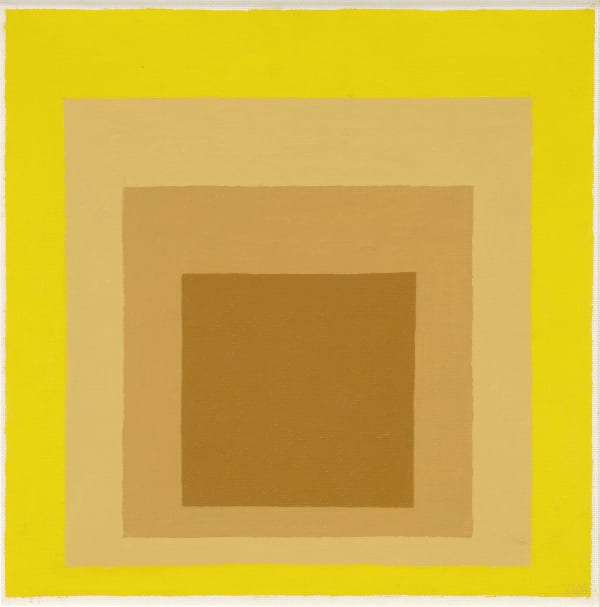Josef Albers American/German, 1888-1976
Josef Albers was an American-German artist born in Bottrop, Germany in 1888. Today he is considered one of the most influential and innovative painters and printmakers of the twentieth century. Celebrated for his invaluable contribution to colour theory, Albers bridged the gap between European and American Modernism by exploring the relationship between colour and space.
Albers was first introduced to the importance of colour in 1920 whilst studying under the famed colourist Johannes Itten at the Bauhaus school in Weimar. Later in 1925, he became a professor at the renowned Bauhaus in Dessau and took over Itten’s course on colour, co-teaching with László Moholy-Nagy.
With the Nazis’ closing of the Bauhaus school in 1933, Albers emigrated to the United States. There he found a position working at the eminent experimental Black Mountain College in North Carolina where he taught, among others, Cy Twombly and Robert Rauschenberg.
In 1950, he moved to Connecticut upon an invitation to direct the newly formed Department of Design at Yale University School of Art. During this period, he developed his most seminal and iconic series: Homage to the Square. The series was dedicated to simple geometric forms and chromatic colours, illustrating how the visual perception of a colour is greatly influenced by its neighbouring hues. Albers’ careful application of colour to create depth in his work also resulted in the shapes appearing to move beyond the picture plane.
His legacy as an artist and teacher profoundly influenced the development of modern art in the United States during the 1950s and 1960s, and continues to influence contemporary artists today.
Albers’ works can be found in museum collections worldwide including The Museum of Modern Art in New York, the Art Institute of Chicago, the National Gallery of Art in Washington, D.C., and the Tate Gallery in London.
Josef Albers died in 1976 in New Haven, Connecticut aged 88.

